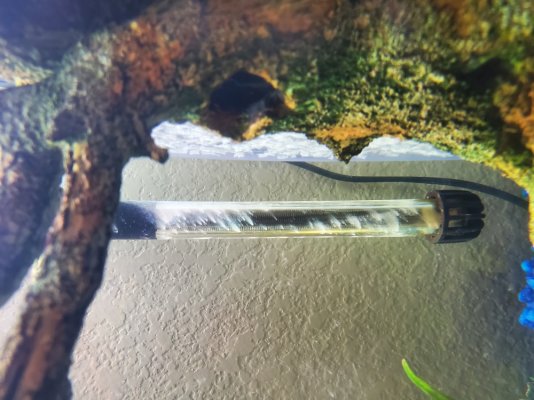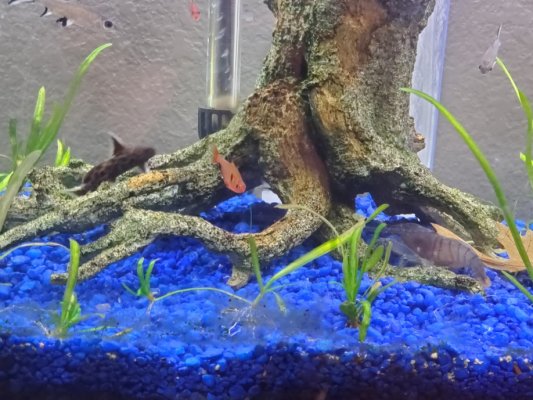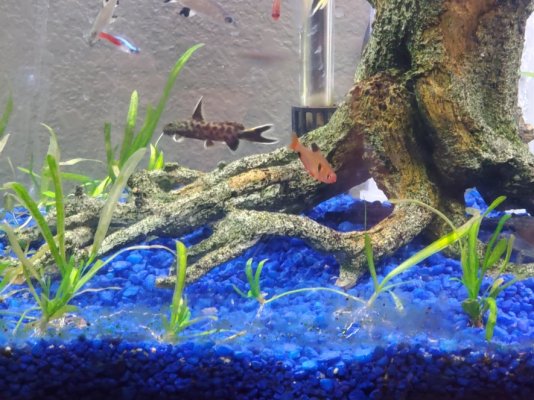Thanks for taking the time to reply.
No, it's not fungus.
We have watched the synodontis put it on there and they have also put a few dots on the tank wall.
Could it have something to do with them eating the Amano Shrimp? When we bought the tank, the owner thought there were 30 Amano shrimp. We only counted 8. Then after the 3 Synondontis acclimated to the new environment, they started eating 1 shrimp a day. We removed the shrimp after we decided the Synodontis were killing them and they didn't die naturally. The Synodontis were very active for those 2 days they were eating the shrimp and the day after while they were still looking for the Amanos. I have never had these Synodontis before and had read nothing about them killing Amano Shrimp.
Today the Synodontis are not very active. They refuse to eat all the different kinds of bottom feeder pellets I have put into the tank. I have tried 3 different kinds including bug bites and API. I will get them some frozen blood worms and see if that does anything. But they were bullying the Corrys I put in there and I need a pleco to get the algea no one else is getting and take care of the bottom better. The Corys kinda stay in a corner so they are not doing a great job on the bottom...



